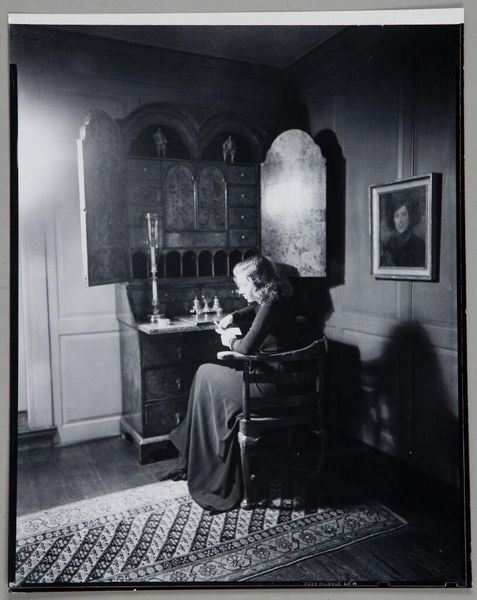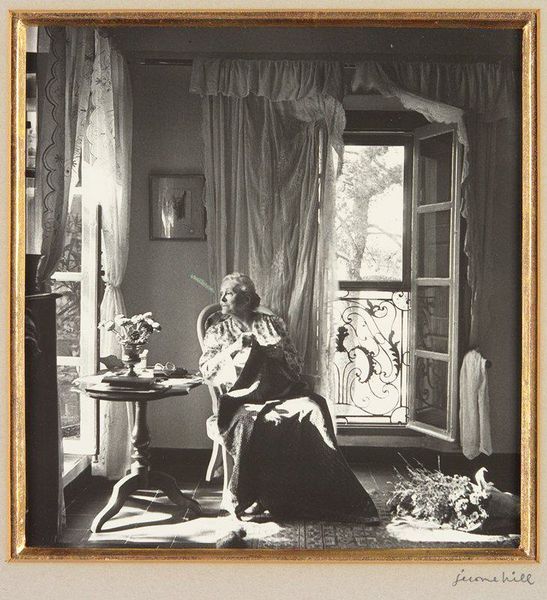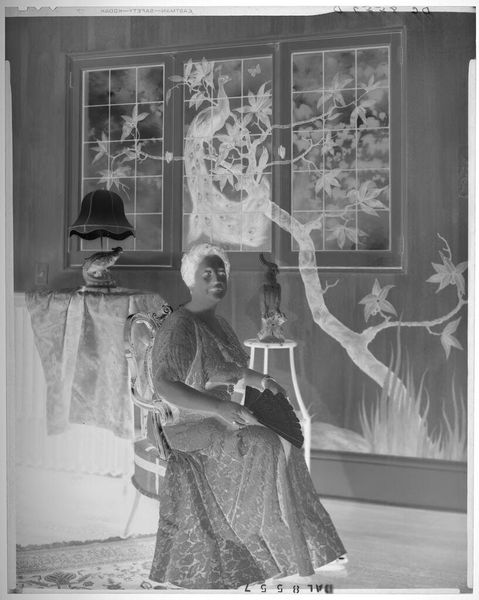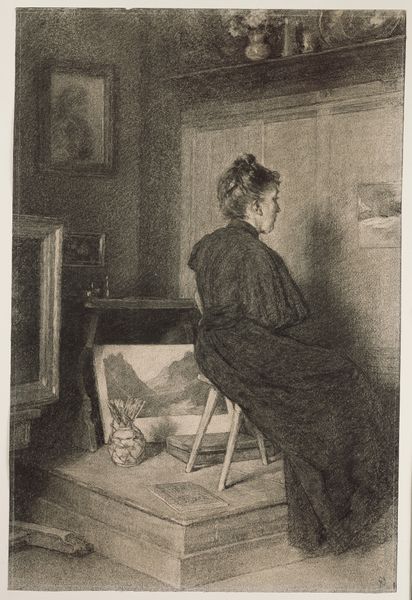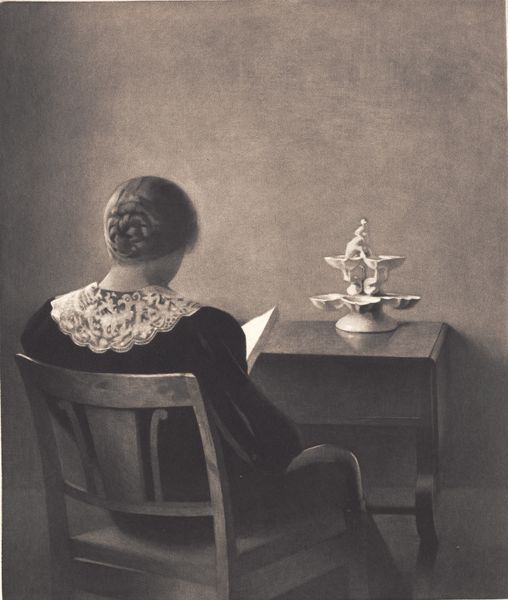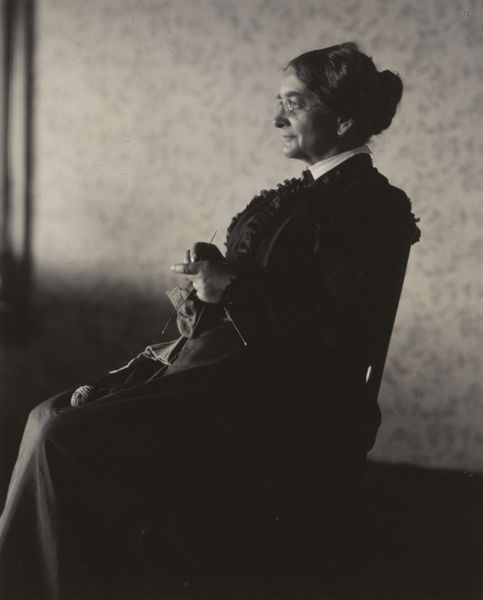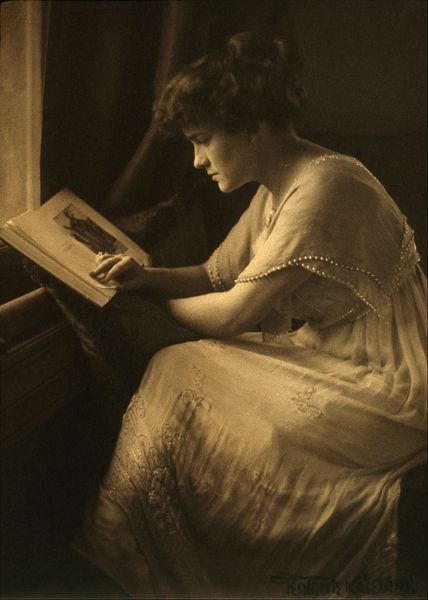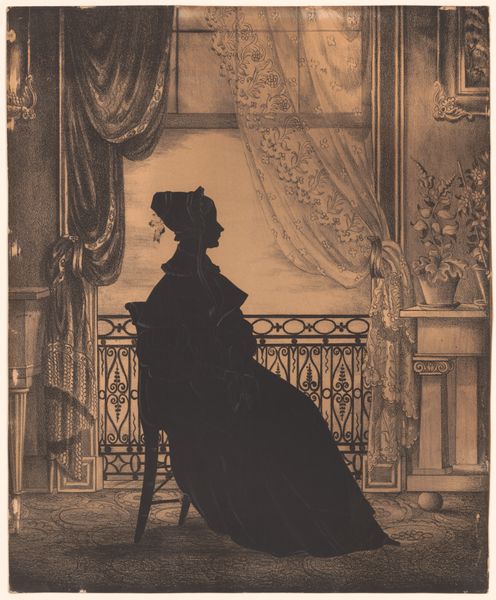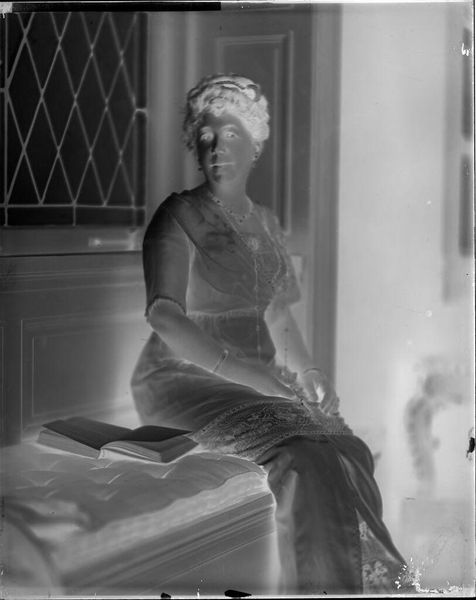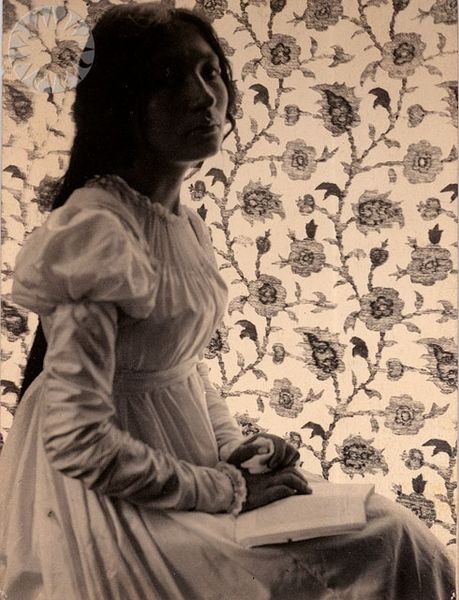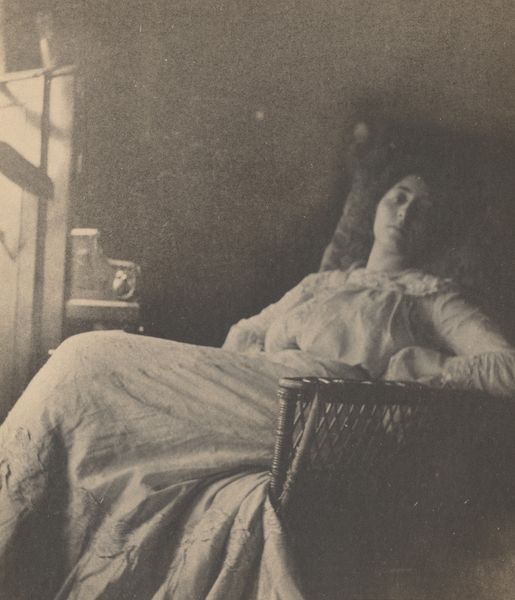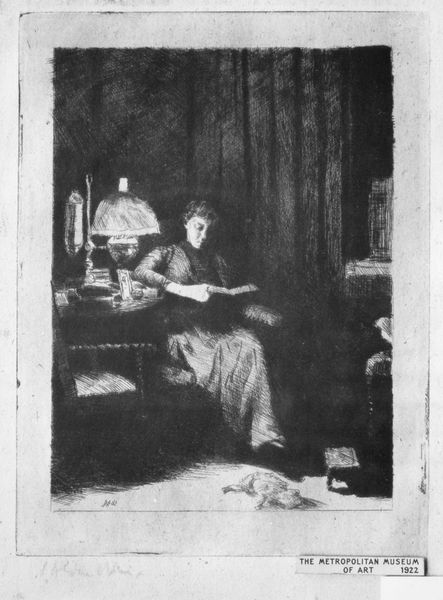
drawing, pencil
#
portrait
#
drawing
#
black and white photography
#
intimism
#
black and white
#
pencil
#
genre-painting
#
monochrome
#
realism
Dimensions: 87.5 cm (height) x 58 cm (width) (Netto)
Editor: So here we have Axel Helsted’s "Romanen. Ung laesende pige," placing us sometime between 1862 and 1898. It’s a pencil drawing, capturing a young woman absorbed in a book by a window. There’s a quiet intimacy to the scene. What strikes you when you look at it? Curator: I’m immediately drawn to the means of production here. Consider the materiality of the image itself – graphite, applied to paper, tools readily available and relatively inexpensive, opening art making to a wider range of people. This intimate domestic scene, achievable with modest resources, moves us away from the grand historical painting and heroic narratives often seen in art. Why choose pencil? What social class does it depict? Editor: I guess it democratizes art making? The Realist style connects to that too, right? Less idealization and more focus on everyday life. I also noticed the framing: the chair, the desk… almost like staging. Curator: Precisely. Think about how the availability of manufactured pencils, versus hand-prepared materials, influences artistic practice. Also, notice the light - it's directional and appears to enter via the window - what material considerations do the window's design have for accessing literacy in the time period depicted? Do we even know that she is literate or that it is "her" novel? Editor: It really shifts the focus. It's less about *what* she's reading and more about *her access* to that printed material as part of a changing world, of manufacturing... Curator: Indeed. Consider Helsted’s own economic position as he makes this. Who is his intended audience? Editor: Good point. So it is a pencil drawing of a girl, maybe from the middle class. He probably expected wealthier people to see this and perhaps be moved to purchase more works by him, as well as connect to her pursuit. It definitely made me look closer and question what I'm actually seeing, instead of making assumptions. Curator: Exactly, by analyzing its construction and social background.
Comments
No comments
Be the first to comment and join the conversation on the ultimate creative platform.
